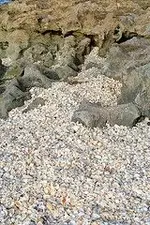G.I.B.
Gold Member
- Joined
- Feb 23, 2007
- Messages
- 7,187
- Reaction score
- 8,539
- Golden Thread
- 0
- Location
- North Central Florida
- 🏆 Honorable Mentions:
- 1
- Detector(s) used
- CTX 3030 / GTI 2500 / Infinium LS / Tesoro Sand Shark / 1 Garrett Pro-pointer / 1 Carrot / Vibra Probe 580 (out on loan) / Lesche M85 / Mark1 MOD1 EyeBall
- Primary Interest:
- Other
mgg.rsmas.miami.edu/students/bvlaswinkel/article_Stepanian_et_al.doc
This is a comprehensive article concerning the movement of fluorescent tagged beach sand. I know it will not give the details for the heavier coins, but it will show you the basic expected movements under a controlled experiment.
This is a comprehensive article concerning the movement of fluorescent tagged beach sand. I know it will not give the details for the heavier coins, but it will show you the basic expected movements under a controlled experiment.








